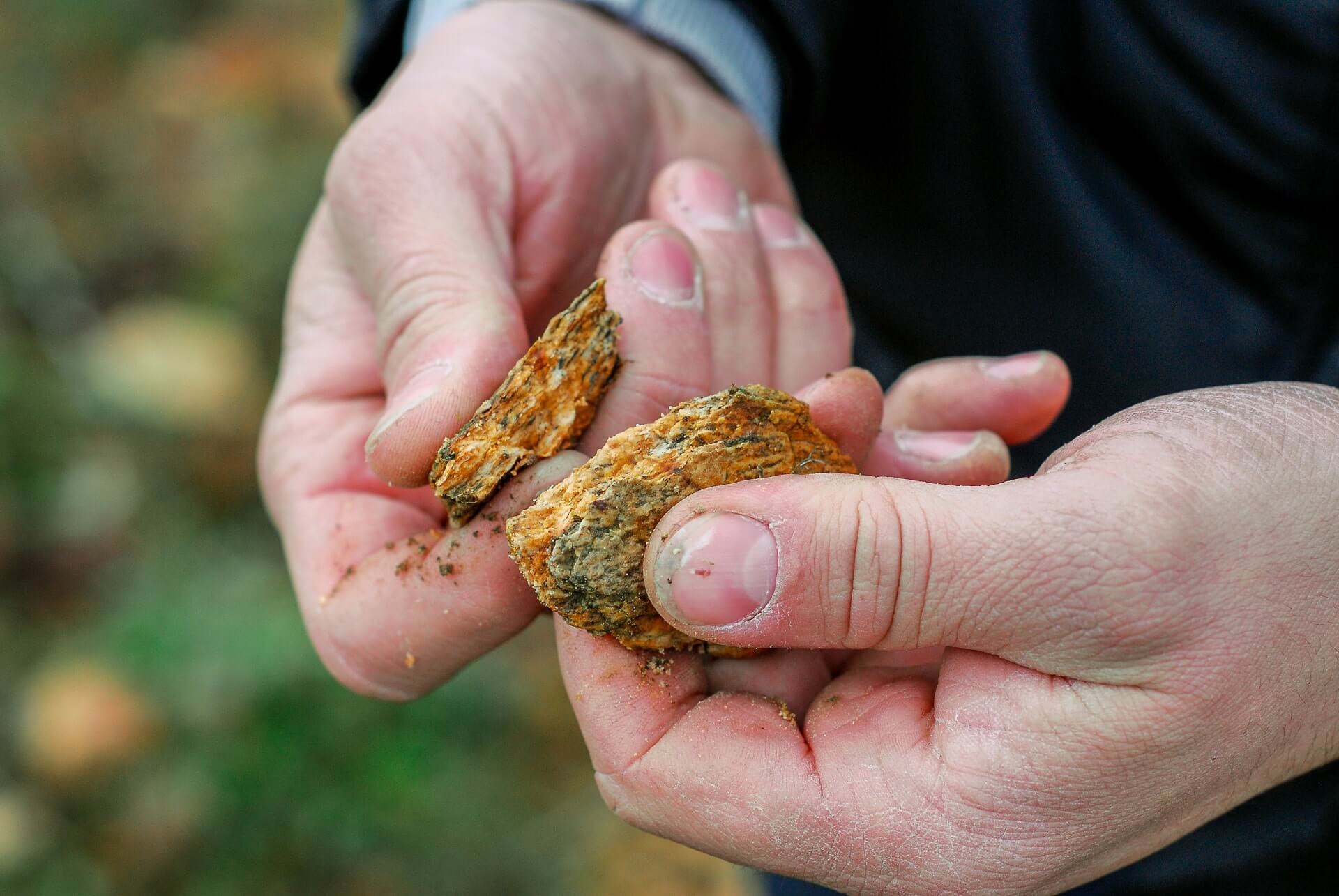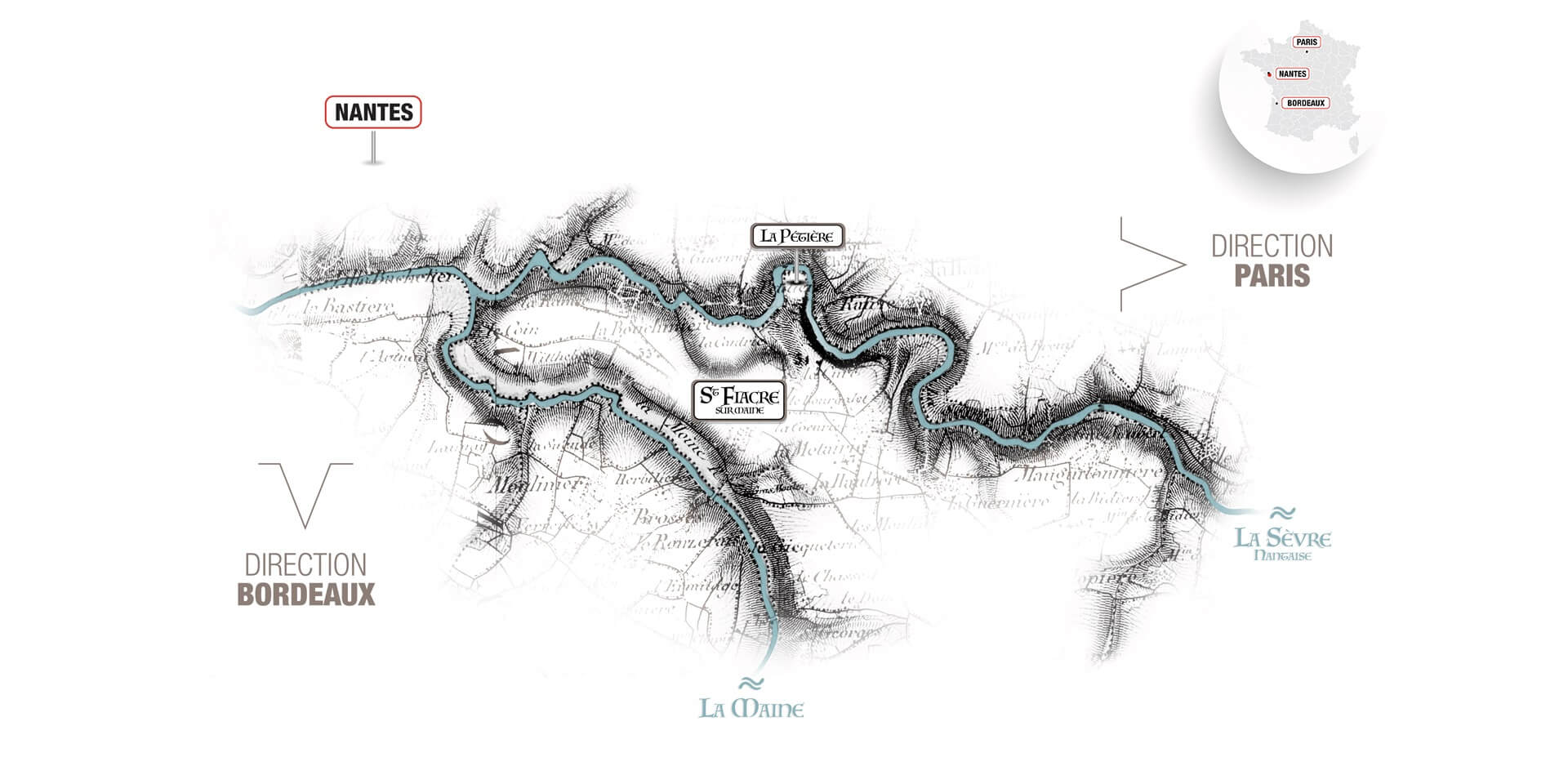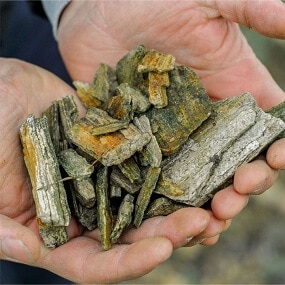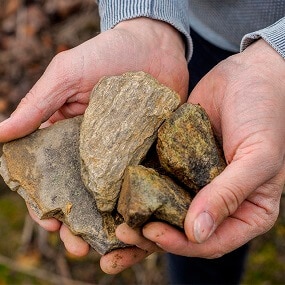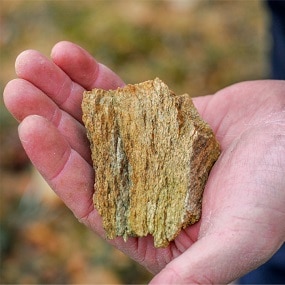Domaine de la Combe, vineyard of the Pays Nantais, producer of Muscadet in Saint-Fiacre
 The Soil
The Soil 
A terroir between Sèvre and Maine
At the mouth of the Loire river —the river so much appreciated by the kings of France— is nestled the vineyard of Muscadet. At the heart of the Nantes region, appears the only village embedded between the two Sevre and Maine rivers: Saint-Fiacre! Over time, the valleys of these rivers have shaped steep slopes and drawn an eroded soil. Nowadays, these slopes are rocky and make up a terroir which is conducive to the cultivation of the melon de Bourgogne grape variety. The large number of pebbles allow for a good drainage, forcing the roots to go down in this cracked rock to draw water deep down.
At La Pétière, solely the vine was able to grow on the pebbles just above the ground. This multi-exposure cliff, characterized by table-lands as well as southern exposure slopes, plains and a northern slope, is made of metamorphic rocks. Here intersect the faults of schist, gneiss and orthogneiss. The vine plots are almost surrounded by the Sevre River, thus creating a unique microclimate.
Three soil types
The Schiste
The schist, which is an extremely friable rock, is composed of flakes; it therefore perfectly drains water and allows for a good immersion of the roots.
The Gneiss
Leptinic gneiss, resembling piano keys, fractures in straight lines; it is rather compact and stores the heat of the day to restore it at night.
The orthogneiss
Orthogneiss fractures easily; it is loaded in minerals, and is also compact.



